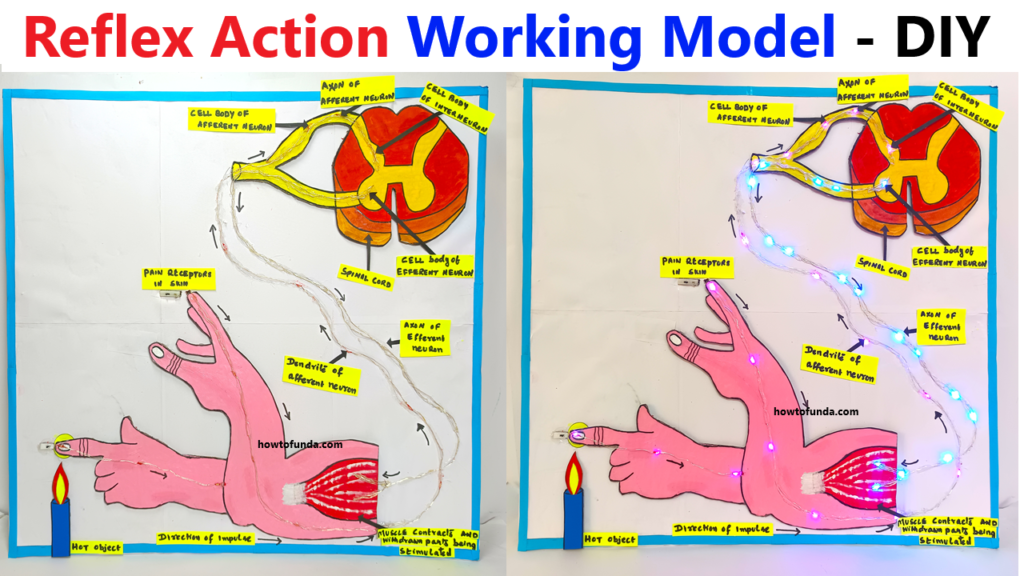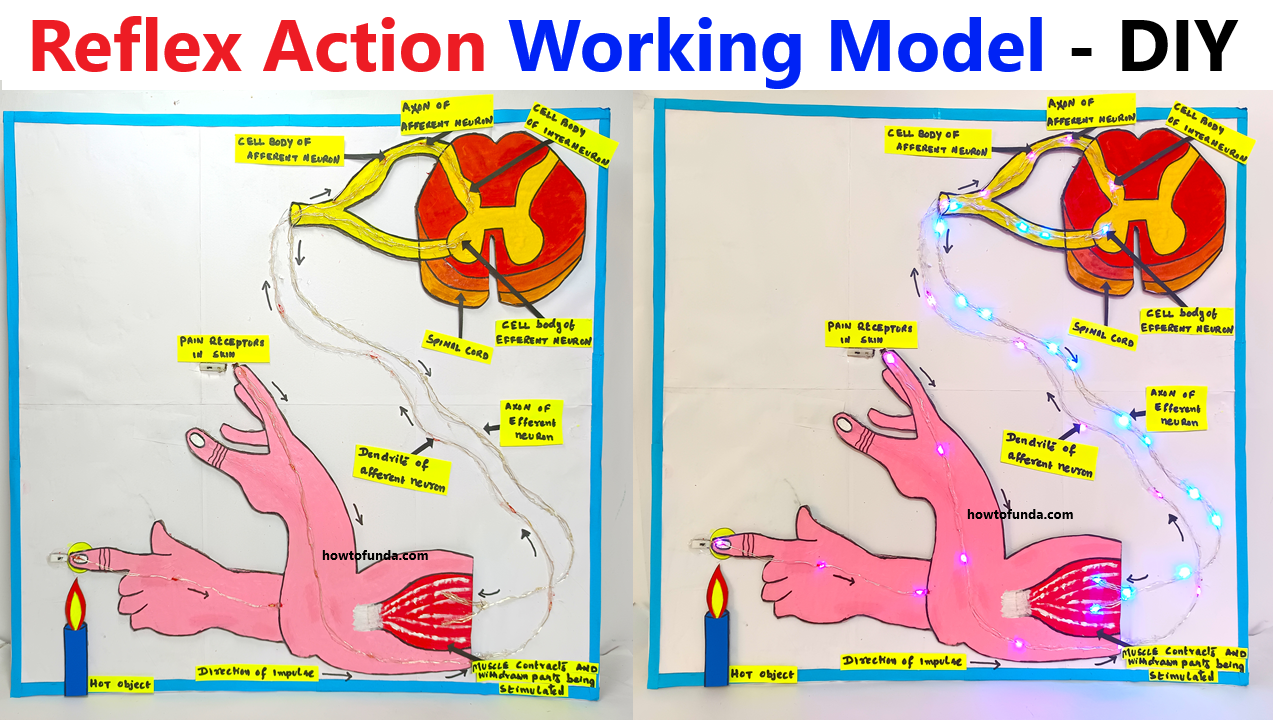A reflex action working model demonstrates the rapid and automatic response of the body to certain stimuli without conscious thought. Reflex actions are controlled by the nervous system, particularly the spinal cord, bypassing the brain to save time during emergencies. This ensures quick reactions, which are crucial for safety and survival.

How the Model Works:
The model typically illustrates a simple reflex arc using basic components like an artificial hand, wires, a light bulb, and a buzzer. These represent the parts of the reflex mechanism. A stimulus, such as touching a hot object, is simulated by pressing a switch or completing a circuit.
- Stimulus: When the switch is pressed, it acts like a signal (similar to pain or heat in a real scenario).
- Receptor: In the human body, sensory neurons detect the stimulus. In the model, this is represented by the circuit’s input.
- Sensory Neurons: The wires in the model symbolize the pathway carrying the signal to the control center.
- Control Center: The spinal cord (represented by a connection in the circuit) processes the information and sends back a response signal.
- Motor Neurons: Wires carry the response signal from the control center to an output device (like a bulb or buzzer).
- Effector: The bulb lights up or the buzzer sounds, mimicking the action of pulling your hand away in real life.
Purpose:
The model emphasizes the importance of reflex actions in preventing injuries and maintaining body functions. Examples of reflex actions include blinking, sneezing, or pulling your hand away from heat. This working model is ideal for understanding the reflex arc and the efficiency of the nervous system in real-time responses.

